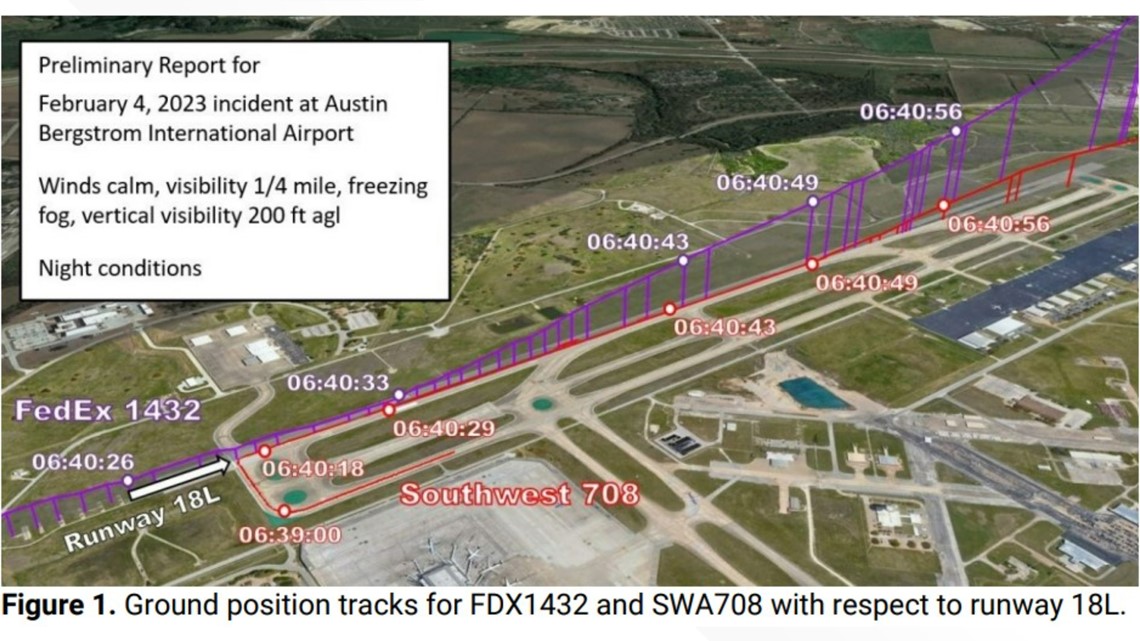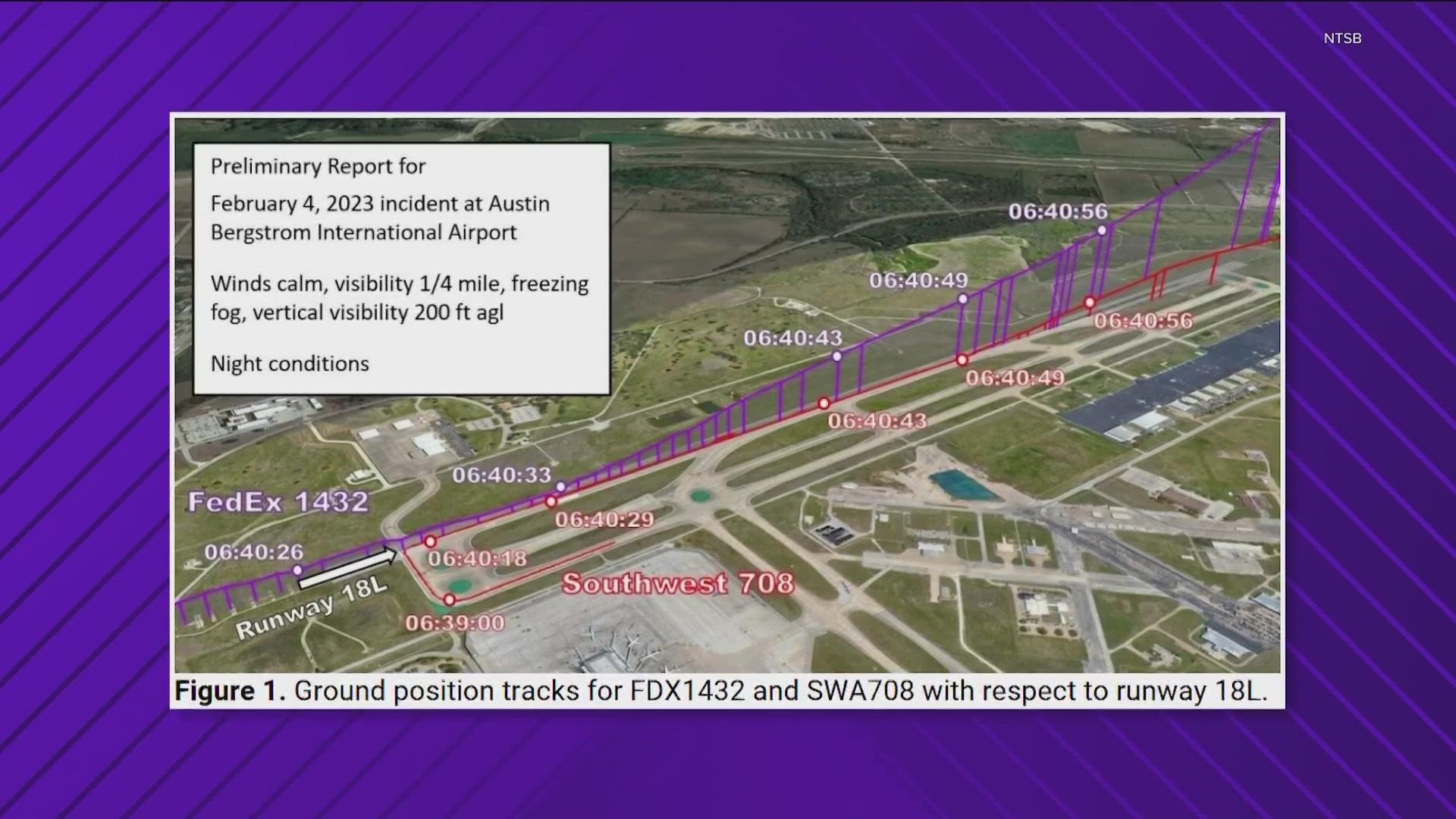AUSTIN, Texas — The National Transportation Safety Board (NTSB) has released its preliminary report regarding the averted crash at Austin-Bergstrom International Airport (AUS) at the beginning of February.
On March 2, NTSB released a preliminary report regarding the incident. The report detailed what occurred on runway 18L between a Federal Express (FedEx) plane and a Southwest Airlines flight on Feb. 4, 2023.
The Austin Airport Traffic Control Tower's air traffic manager stated that at the time of the incident, 6:40 a.m., there was "extremely low traffic volume and complexity at AUS." The weather at the time of the incident, according to the report, had "wind calm, visibility 1/4 mile in freezing fog, vertical visibility 200 feet above ground level and a temperature minus one degree Celsius."
This means that there was extremely low visibility for planes to see any oncoming traffic in the areas surrounding them.
The audio recording logs state that at 6:34 a.m., the pilots of the FedEx plane began communication with the control tower and stated that the plane was approaching runway 18L to land. The controller then told the pilots the runway visual range (RVR) and cleared FedEx to land.
Four minutes later, at 6:38 a.m., the first officer (FO) of the Southwest Airlines flight checked-in with the control tower and stated "they were holding short of runway 18L and were ready for takeoff," according to the report. The controller told the FO the RVR values and indicated that the FedEx plane was on a 3-mile final approach to the same runway.
After the FO acknowledged the instructions with a correct readback to the tower, they were provided clearance for takeoff. The Southwest Airlines flight proceeded to then taxi to runway 18L, line-up with the runway centerline and "came to a complete stop at which point, control of the aircraft was transferred from the captain to the FO," the report detailed.
The FO stated in the report that he advanced the power, checked the engines and released the brakes to begin takeoff roll. One minute later, at 6:39 a.m., the FedEx pilots checked back in with the control tower to confirm clearance to land on runway 18L, because "he was concerned about the Southwest traffic."
The controller confirmed FedEx to land and that the Southwest Airlines flight would be departing on runway 18L ahead of the FedEx plane.
Less than a minute later, the FedEx plane had around 0.7-miles to runway 18L for the final approach. This prompted the controller to ask the Southwest Airlines flight to "confirm they were on the roll," and the captain responded that at that moment they were rolling.


The report stated that the captain of the FedEx plane "noted that at an altitude of about 150 feet, the FO called go-around after visually seeing [the Southwest Airlines flight] at approximately 1,000 feet to 1,500 feet from the approach end of the runway."
This prompted one of the crew members on the FedEx plane to broadcast "Southwest abort" and four seconds later stated "FedEx is on the go," indicating that FedEx reversed the landing and instead did a climb-out to re-attempt the landing at a safer approach.
According to the report, the Southwest Airlines' captain noted "that somewhere between the speeds of 80 KIAS and V1, he and the FO heard FedEx call for a go-around."
The surveillance-broadcast data showed that once the FedEx flight was at the departure end of runway 18L and began climbing out at 1,900 feet, the controller told FedEx to "turn left heading 080 and maintain 3,000 feet." At the same time, the Southwest Airlines flight was around 1,000 feet lower and began a right turn from the runway heading.
The report did not state the closest proximity of the planes at the time of the "overflight" occurrence. A further investigation is continuing, as the traffic alert and collision avoidance system computers from both planes have been removed to review.


